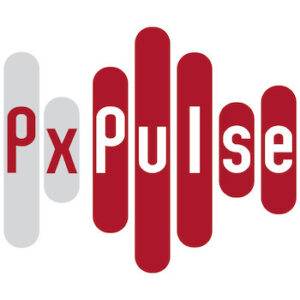This statement, from a coalition of advocates, applauds the WHO for its ongoing support and its 2021 recommendation of the dapivirine vaginal ring as an additional prevention option for women. The advocates call on funders, country governments and community leaders to sustain their support for the ring’s introduction and rollout in African countries where it is needed and for prompt regulatory reviews. And they call on HIV programs to integrate the ring, and collaborate with communities on the design of those programs.
Statement on the Dapivirine Ring for Women: Call for Accelerated Global Access
Research Fundamentals: An HIV Vaccine — What’s the challenge and what’s the science?

Some vaccines are easier to develop than others. COVID-19 vaccines were developed with unprecedented speed, taking a matter of months to become available. A measles vaccine took about 10 years to develop. But the field’s been working on an HIV vaccine for 40 years.
In this episode, AVAC’s Jeanne Baron and co-host immunologist Katharine Kripke of AVENIR Health explore why HIV is different with two experts on vaccine research: Caltech’s Pamela Bjorkman and IAVI’s Vincent Kioi.
Learn how HIV has evolved like no other virus today to escape detection by the immune system. Learn why the right target on HIV is so hard to reach and how scientists are tackling it all.
Previous Research Fundamentals
More Vaccine Resources
Time to Develop a Vaccine
We know that an AIDS vaccine is possible and that a vaccine will be an important part of a long-term strategy to end the AIDS epidemic. The road ahead is long, but clinical trials—even those with disappointing results—and early-stage research provide critical clues to the way forward. This graphic is excerpted from Vaccines by the Numbers: Trials, discoveries, money and more.
Phase 1 mRNA HIV Vaccine Trials
A breakdown of current HIV mRNA trials and a primer on the basics of mRNA technology.
Breaking Down the Latest in HIV Cure Research: What do new data mean for people living with HIV
In this AVAC-hosted webinar, researchers broke down the recent case of HIV cure, the first among women. Speakers also provided updates from an ongoing trial studying pediatric remission. Participants learned what these advances mean for science and for people living with HIV. Watch the recording here.
Consultation with FP/SRH Stakeholders on the Dual Prevention Pill
This report summarizes and reports next steps from an AVAC and FP2030 convened consultation with family planning (FP) and sexual and reproductive health (SRH) stakeholders. The aim of the consultation was to understand stakeholders’ unique perspectives on the Dual Prevention Pill (DPP), a daily oral pill that prevents HIV and pregnancy. The consultation helped to elevate questions and issues to consider as DPP introduction plans are refined and that can also inform the development and delivery of future multi-purpose prevention technologies (MPTs).
What Matters Right Now for Rolling Out the Ring and Injectable PrEP?

The HIV field has two new approved prevention options waiting in the wings, the dapivirine vaginal ring and injectable cabotegravir as PrEP. Until now, daily oral PrEP, first approved in 2012, has been the only drug-based strategy for HIV prevention.
So here we are: research has shown safety and efficacy for both the ring and injectable cabotegravir. Now it’s time to take the next steps to deliver these options and translate advances in science into real impact on the epidemic.
At AVAC, we’ve been calling for coordinated planning to introduce and rollout new products, while expanding access to existing options. These efforts must learn from the mistakes of the past, especially lessons from rolling out oral PrEP.
In this episode of PxPulse, Linda-Gail Bekker from South Africa’s Desmond Tutu Health Foundation and Lillian Mworeko from the International Community of Women Living with HIV East Africa (ICWEA) join host Jeanne Baron and AVAC’s Executive Director Mitchell Warren to discuss innovative models for scale-up and delivery. Taking the right steps now could mean HIV prevention options fulfill their life-saving, epidemic-ending potential, and to do so requires working faster and more efficiently than ever before.
We dive into what lessons the field has learned, what’s still off-track, and the steps advocates, policy makers, drug makers and funders should each take right now to turn efficacious options into effective choices.
Resources
Dapivirine Vaginal Ring
Cabotegravir
Ring and CAB
Experimental mRNA-based Preventive HIV Vaccine Phase 1 Trials
The NIH announced a new study to test three mRNA-based HIV vaccine candidates. This study follows an announcement in January from IAVI about another mRNA-based HIV vaccine study. This snapshot compares the two studies.
TB CAB 10-Year Anniversary Evaluation Report 2011–2021 and Podcast
This report details an evaluation of the Global Tuberculosis Community Advisory Board after 10 years of functioning, highlighting strengths, identifying challenging, and illuminating the pathway forward. Visit here for the report and accompanying podcast series.
HIV Testing for Advocates
This slide deck provides and overview of HIV testing—types of test, WHO guidelines, current issues in testing, looking ahead, resources and more.